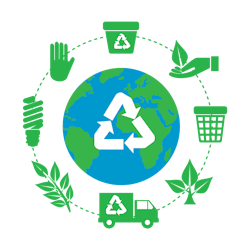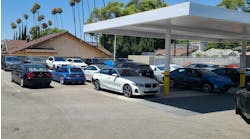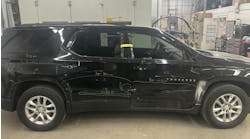Eco-friendly business practices are becoming increasingly common, especially since half of consumers now say sustainability is a top priority when choosing products or services. The automotive industry is no exception, with electric vehicles hitting the market and consumers and businesses seeking partnerships with manufacturers, auto body shops, and collision repair centers that prioritize sustainability.
Collision repairs shops must already adhere to strict environmental waste disposal regulations, but there are other steps they can take to integrate sustainability into their business practices. This guide will explore the importance of these sustainable practices and offer tips for implementation.
The Need for Sustainability in Collision Repair Shops
The benefits of sustainability in business go beyond attracting customers. Shops can save money by reducing energy and resource consumption, improve their reputation and attract employees who want to work for an environmentally friendly company. Sustainability also goes a long way with brand loyalty since many consumers tend to stick with businesses and organizations that share their same values.
10 Ways to Implement Sustainable Practices in a Collision Repair Shop
Consider adopting a few — or even all — of these practices to help reduce your carbon footprint.
1. Use eco-friendly materials.
Switch to waterborne paints, which, as the name suggests, use water, rather than solvent, to carry the pigment and binders of the paint. This type of paint can be easily washed away with soap and water, eliminating the need for lacquer thinner, which is highly flammable and poses significant health risks. It’s also important to use low volatile organic compound (VOC) products, which emit fewer harmful gases. In the automotive industry, VOCs are typically found in paints, primers and coatings.
2. Participate in programs that promote sustainability.
The goal of the U.S. Environmental Protection Agency (EPA)’s Collision Repair Campaign is to minimize exposure to harmful air emissions from auto body repair shops. The voluntary campaign also helps businesses comply with the EPA’s Auto Body Rule, which aims to reduce hazardous air pollutants — specifically emissions from paint stripping and surface coating operations, which often contain hazardous chemicals such as lead and chromium.
3. Improve waste management.
Consider implementing a recycling program for metals, plastics, cardboard and paint containers. It’s also important to safely dispose of hazardous waste through certified waste disposal services.
4. Implement energy-efficiency lighting.
Lighting is a key element of sustainable office design, and while collision repair shops differ from typical offices, it remains crucial. In fact, lighting accounts for 17% of all electricity consumed in U.S. commercial buildings. Upgrading to energy-efficient lighting solutions, such as LED bulbs and motion-activated sensors, can help reduce energy usage, lower costs and improve overall sustainability.
5. Obtain sustainability-related certifications.
Certifications demonstrate to both customers and your employees that you take sustainability seriously. The Safety and Pollution Prevention certification, for example, is designed to keep auto body repair technicians and staff compliant with EPA and OSHA training guidelines. The training teaches professionals how to recognize hazards in the workplace so that they can maintain a safe and environmentally compliant shop. Other local sustainability initiatives can also help promote your shop as eco-conscious.
6. Go paperless.
Reduce paper waste by going digital. In addition to saving on the expense of paper, ink, envelopes and postage, going paperless at your repair shop allows customers to receive any type of documentation immediately, including digital invoices and inspections.
7. Educate and train your employees in best practices.
Encourage employees to adopt sustainable habits and make sustainability training a key component of employee development, ensuring that it is a continuous learning process. Additionally, inspire employees to explore sustainability outside the workplace, whether it’s becoming involved in community initiatives, listening to related podcasts, reading eco-friendly literature or attending local environmental events.
8. Use green cleaning products.
Change to biodegradable and non-toxic products for cleaning vehicles, equipment and your offices.
9. Take the proper steps to reduce air pollution.
Ensure your shop is equipped with proper ventilation systems to reduce harmful fumes and enhance overall air quality. Effective ventilation can also lower the risk of fire hazards linked to flammable vapors and materials.
10. Invest in renewable energy.
Some collision repair shops may want to consider installing solar panels, as this can reduce greenhouse gas emissions, improve air quality and decrease reliance on fossil fuels. Renewable energy accounts for more than 20% of electricity generation in the United States, and by 2025, domestic solar energy generation is expected to increase by 75%. If investing in renewable energy isn’t an option, consider buying Renewable Energy Certificates, which are market-based instruments that represent the rights to the environmental and social benefits associated with one megawatt-hour (MWh) of electricity generated from renewable sources and delivered to the grid.
It’s important to remember that some of these sustainability practices may take time to implement, while others are relatively easy to adopt. Regardless of whether you’re looking to make a few adjustments or undergo a total eco-friendly overhaul, be sure to conduct periodic audits to identify what’s working and what isn’t. This will help you reach your sustainability goals and track your progress over time.





